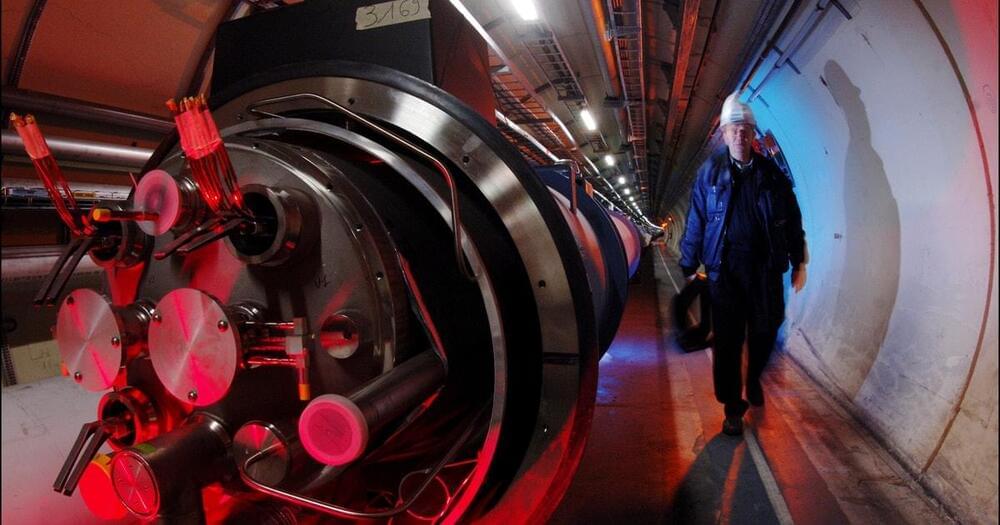Yay 😃
CERN’s gargantuan particle collider could change everything by discovering a new force of nature.


This rolling sheet of solar panels may not look like much, but it could help spark a solar power revolution in the railroad industry.
The creators of the solar-powered locomotive of the future were aiming to set a Guinness record for speed last weekend, and that is more than just your ordinary attention-getting stunt. Demonstrating the functionality of PV panels on rail cars could help set the stage for solar power to knock diesel fuel out of the railroad business. No word yet on the official results, but solar is beginning to wiggle its way into a field dominated by fossil fuel.
The Solar Train Of The Future Hits The Tracks, With Only Solar Power
When people say “solar train,” they usually mean a battery-powered train charged by solar panels parked in a solar farm, such as the UK’s Riding Sunbeams project. In other words, the solar power is there, but it is not actually along for the ride.
Hey it’s Han from WrySci HX going through an intensive plan on how to build a fully functioning society on Mars! Developed by ABIBOO Studio and the Sustainable Offworld Network, we’ll take a look at the architecture, technology, energy, sustainability, government and more of the potential million person Mars colony in the new world. Quite interesting! More below ↓↓↓
Subscribe! =]
Please consider supporting 🙏
Patreon: https://www.patreon.com/wrysci_hx.
Follow me on twitter: https://twitter.com/han_xavier_
Or better yet, consider supporting any of the following =].

A team of researchers from the University of Florida, led by Dr. Philip Feng, in collaboration with Prof. Steven Shaw in Florida Institute of Technology, has now demonstrated extremely high-efficient mechanical signal amplification in nanoscale mechanical resonators operating at radio frequency. The devices employed in this research might be the tiniest mechanical resonators exhibiting amplification, and the gain achieved is the highest known for all mechanical devices reported to date.
The displacement amplification is realized based on “parametric pumping or parametric amplification” of mechanical motion. Parametric amplification can be mainly achieved when a parameter of system is modulated by twice multiples of the frequency. A simple example of parametric amplification is a child playing a swing. The child can periodically stand and squat twice in a single period of the swing to increase or “amplify” the swing amplitude without anyone helping to push.
The researchers have realized the parametric amplification in the tiny nanoscale devices. The nanoscale drumhead mechanical parametric amplifiers demonstrated in this research consist of an atomically thin two-dimensional semiconducting molybdenum disulfide (MoS2) membrane where the thickness of the drumheads is 0.7, 2.8, 7.7 nanometer with 1.8 micrometer in diameter and 0.0018–0.020 m3 in volume. The nanodrums are fabricated by transferring nanosheet exfoliated from bulk crystal over microcavities to make suspended atomically thin nanodrums.

The Research World is a group of Professional, Experienced, Scientists and work with a growing set of Researchers in India and internationally.
Oculus Quest 2: https://amzn.to/3w0j6dO (Affiliate link)
Ray Ban Stories: https://amzn.to/3mv62tT (Affiliate link)
Timestamps:
00:00 Intro.
01:04: Brief History of Facebook.
04:47: VR & AR Today.
14:21: Mark Zuckerberg’s Master Plan.
23:19: Support Perhaps?
Links (In order of appearance):
October 28 2021: Mark Zuckerberg talking at Facebook Connect: [https://fb.watch/8X18pssy2q/]
October 23 2021: [https://youtu.be/99BnZ8js1_k?t=26] Reuters: What is the Metaverse?
July 23 2021: CNBC Television: [https://youtu.be/d5KzLgbb5Xo?t=260]

China’s rich aren’t sleeping well these days. As President Xi Jinping’s campaign to redistribute income gains momentum, the wealthy are on the defensive, deleting social media profiles and moving money around with an eye toward the next crackdown.
The new emphasis on protection is a shift for the upper classes, who have for years benefited from stellar economic growth and a relaxed official attitude to personal fortune. The country created a new billionaire every week in 2,021 bringing the total to more than 750 — more than India, Russia and Germany combined and just behind an estimated 830 in the U.S., according to the Bloomberg Billionaires Index.
Here’s why.
Homer Hickam is the author of Rocket Boys, the book that inspired the film October Sky. The NASA engineer reveals why he thinks the agency should focus on nuclear rockets and other ideas.
